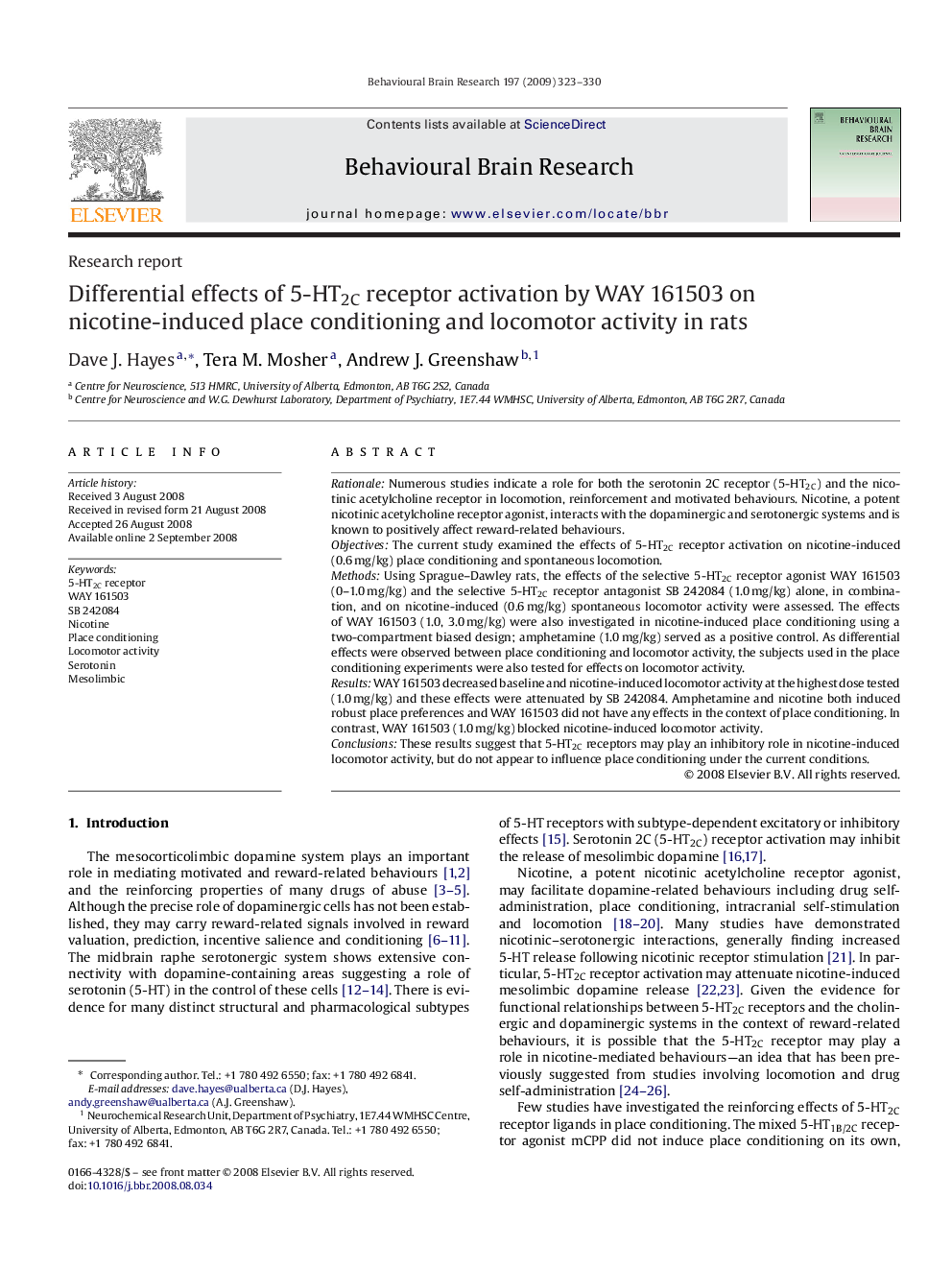| Article ID | Journal | Published Year | Pages | File Type |
|---|---|---|---|---|
| 4315055 | Behavioural Brain Research | 2009 | 8 Pages |
RationaleNumerous studies indicate a role for both the serotonin 2C receptor (5-HT2C) and the nicotinic acetylcholine receptor in locomotion, reinforcement and motivated behaviours. Nicotine, a potent nicotinic acetylcholine receptor agonist, interacts with the dopaminergic and serotonergic systems and is known to positively affect reward-related behaviours.ObjectivesThe current study examined the effects of 5-HT2C receptor activation on nicotine-induced (0.6 mg/kg) place conditioning and spontaneous locomotion.MethodsUsing Sprague–Dawley rats, the effects of the selective 5-HT2C receptor agonist WAY 161503 (0–1.0 mg/kg) and the selective 5-HT2C receptor antagonist SB 242084 (1.0 mg/kg) alone, in combination, and on nicotine-induced (0.6 mg/kg) spontaneous locomotor activity were assessed. The effects of WAY 161503 (1.0, 3.0 mg/kg) were also investigated in nicotine-induced place conditioning using a two-compartment biased design; amphetamine (1.0 mg/kg) served as a positive control. As differential effects were observed between place conditioning and locomotor activity, the subjects used in the place conditioning experiments were also tested for effects on locomotor activity.ResultsWAY 161503 decreased baseline and nicotine-induced locomotor activity at the highest dose tested (1.0 mg/kg) and these effects were attenuated by SB 242084. Amphetamine and nicotine both induced robust place preferences and WAY 161503 did not have any effects in the context of place conditioning. In contrast, WAY 161503 (1.0 mg/kg) blocked nicotine-induced locomotor activity.ConclusionsThese results suggest that 5-HT2C receptors may play an inhibitory role in nicotine-induced locomotor activity, but do not appear to influence place conditioning under the current conditions.
